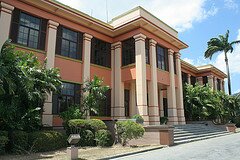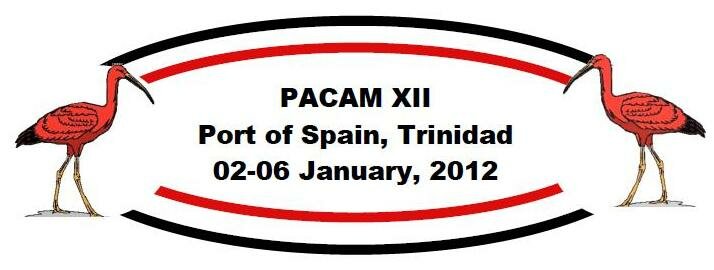ADVANCES IN SOLID MECHANICS
Chair: Pradeep Sharma, University of Houston
Mechanics has continuously redefined itself as different areas of physical applications have waxed and waned in prominence. Several contemporary topics such as mechanics at the nanoscale, multifunctional materials, intersection of mechanics with subjects such as chemistry have forced critical re-evaluation as well extensions of classical mechanics. Many essays on chemistry you can find at the best writing service where there is a large selection of topics. This symposium aims to bring together researchers whose work reflects contemporary advancements in mechanics including the following (incomplete) list of topics: defects, surface energy, multifunctional materials, intersection of mechanics with quantum mechanics, chemistry and various branches of solid state physics, reconciliation of atomistic and continuum notions, and application of mechanics in emerging areas such as materials for energy.
ANALYTICAL MODELS WITH SCIENTIFIC APPLICATIONS
Chair: Ricardo Ferreyra
This symposium seeks to promote the interaction between specialists from the field of Science (or related areas), whose research results strongly depend on the change, adaptation or generation of new models, to stimulate the global knowledge integration from theoretical, analytical and experimental results by means of model re‐definition and to explore avenues for applying theoretical results to specific applications.
MESHFREE AND EXTENDED/GENERALIZED FINITE ELEMENT METHODS
Chairs: N. Sukumar, University of California, Davis & Marino Arroyo, UPC Barcelona
Meshfree and particle methods as well as Extended/Generalized Finite Element Methods (XFEM, GFEM) have received increased attention and undergone substantial development over the last decade. These methods offer unprecedented flexibility in the construction of basis functions and corresponding smooth approximation spaces. With the proper selection of enrichment functions, this class of methods is able to address many shortcomings and limitations of the classical FEM while retaining its attractive features. Meshfree approximations can be devised using partition of unity functions like Shepard functions, moving least squares functions, entropy shape functions, and many instances of radial basis functions. This mini-symposium aims at bringing together engineers, mathematicians, computer scientists, and national laboratory and industrial researchers to discuss and exchange ideas on new developments, mathematical analysis, and application of meshfree and particle methods, X-FEM/GFEM, and other partition of unity methods. While contributions in all aspects of these methods are invited, some of the topics to be featured are: Meshfree methods for large deformation problems and for solving higher-order (e.g., gradient continua, thin shells, phase field) partial differential equations; Particle methods for fluid-structure interactions, multiphysics simulations; Use of X-FEM/GFEM for applications in which clear advantage over classical approaches can be demonstrated; Application of X-FEM/GFEM in multiscale and multiphysics problems, composite materials, polycrystalline materials, dislocations, fracture, wave phenomena, etc; Implicit and explicit representation of moving interfaces using level sets and fast marching methods approaches for moving boundary problems; Numerical quadrature for partition of unity approximations; Imposition of boundary conditions in partition of unity methods; Robust solution of linear system of equations, efficient preconditioning, solution of eigenvalue problems; Higher-order X-FEM/GFEM; Problems of high-dimensionality
COMPUTATIONAL GEOMECHANICS
Chair: Jose Andrade, California Institute of Technology
This mini-symposium aims at providing an accurate cross-section of the state of the art and the state of practice in computational geomechanics. Emphasis will be given to computational techniques, but experimental methods combined with computational and/or analytical techniques are encouraged. Contributions are solicited in, but not restricted to, the following areas: Computational inelasticity and constitutive modeling for geomaterials; Coupled (e.g., hydro-thermo-mechanical) and multi-physics problems; Discrete or particulate methods; Multiscale methods for geomaterials (e.g, combined discrete and continuum methods); Advanced experimental techniques (e.g., X-ray CT, SEM) linked to computational and/or analytical techniques (e.g., FEM); Applications in geotechnical problems (e.g., excavations); Applications in energy problems (e.g., oil extraction, CO2 sequestration); Applications in geotechnical earthquake engineering (e.g., site response); Wave propagation in geophysical systems
CONTROL OF ROBOTIC SYSTEMS
Chair: Prof. Jose Antonio Riul, UFPB, Brazil
This mini-symposium aims to address modeling techniques for robotics systems and techniques of adaptive control applied to robotic systems. The topics of interest to this mini-symposium are: Modeling the kinematics of robotic systems; Modeling the dynamics of robotic systems; Adaptive control applied to robotic systems.
MULTISCALE METHODS FOR CONSTITUTIVE MODELING OF MATERIALS
Chairs: Celia Reina, Lawrence Livermore National Laboratory; Oscar Lopez-Pamies, SUNY - Stony Brook; Michael Ortiz, California Institute of Technology; Martin Idiart, Universidad Nacional de la Plata
This symposium will address recent advances in the concurrent coupling of scales in solid systems with particular regard to homogenization techniques, multi-level finite element approaches, the quasi-continuum method and their applications. The contributions will include, but will not be limited to: (1) multiscale constitutive modeling of crystalline materials, metallic and elastomeric composites and semi-crystalline polymers; (2) characterization of microstructure evolution in finite-deformation processes; (3) coupled-phenomena theory and its application to shape-memory alloys, magnetorheological elastomers, deformable dielectrics, and shape-memory polymers; and (4) macroscopic and microscopic instabilities. Although the emphasis will be on theoretical and computational methods, experimental contributions are welcome as well.
SAFETY OF STRUCTURES
Chair: Jerzy Malachowski
The Mini-Symposium is organized to gather researchers working on applications of experimental and computational mechanics in analyses, assessment of structures subjected to different kinds of impact/blast loadings and strengthening of structures under extreme loading. Papers will be focused on the following topics: blast loadings, condition of structures subjected to extreme loadings, impacts, progressive collapse, strengthening of structures, structural health assessment, protection concepts and designs. The Mini-Symposium is intended to present challenges and achievements in applications of computational and experimental mechanics in safety structures analyses.
MESOMECHANICS OF SMART MATERIALS AND STRUCTURES
Chair: Yasuhide Shindo, Tokyo University, Japan
This mini-symposium will examine the mesomechanics of smart materials and includes, but is not limited to: Electromagnetic fracture and damage mechanics, Electromagnetic sensors/actuators and MEMS, Piezoelectric or magnetostrictive mechanics, Shape memory materials and applications, Optical fiber and technology, Electroactive materials and films, Multifunctional polymers and composites, CNT‐based nanocomposites, Nanowire, nanotube and nanoclay, etc.). All aspects (theoretical, experimental, computational studies and/or inductrial applications) will be considered.
MULTISCALE MODELING & SIMULATION OF COMPLEX MATERIALS AND SYSTEMS
Chairs: Julian Rimoli, Georgia Institute of Technology, USA; Santiago Serebrinsky, TenarisSiderca, Argentina; Pablo Zavattieri, Purdue, USA
This symposium is focused on the interdisciplinary field of material modeling at different length and time scales with emphasis on complex problems. The main objective is to bring together researchers and engineers from academia and industry working on the leading edge of applied mechanics, material science and engineering, and physics, to further the understanding of behavior of materials of a complex constitution, and/or under complex loading and environmental conditions. Abstracts related, but not limited, to the following areas are welcome: Materials with several dissimilar relevant length scales. Hierarchical materials; Mechanical behavior of heterogeneous materials, fine‐scale composites, polycrystalline materials, multifunctional materials, biological and biomimetic materials; Novel modeling techniques applied to non‐traditional/multifunctional materials: Smart and active materials. Composite materials with adaptive, programmable and switchable properties. Morphable and reconfigurable materials and surfaces. Energy harvesting/storage materials, etc; Combinations of material modeling and experimental characterization and validation for specific engineering applications; Effect of interfaces on mechanical properties; Coupled (multiphysics) problems arising from multifunctional materials; Materials and structures under complex thermal, environmental, diffusion, electromechanical, and other conditions.
VIBRATION ANALYSIS OF SYSTEMS MADE FROM SMART MATERIALS
Chair: Matthew Coleman, Fairfield University
In recent years, there has been an upsurge in the design of structures from “smart materials”. Smart materials have the ability to sense disturbances in the environment and respond to them in a manner which ensures that they operate in the most efficient manner. Possible applications of smart materials include health monitoring, vibration control and shape morphing of engineering devices. This symposium will address current research in smart materials as well as their applications. It will include, but is not limited to, papers on modelling, control and applications of: (a) smart fluids such as magnetorheological fluids and electrorheological fluids, (b) smart solids such as shape memory alloys, piezoelectric materials and magnetorestrictive, as well as (c) the development of new smart material based on carbon nanotubes.
STRUCTURAL OPTIMIZATION STRATEGIES BASED ON MESH FREE AND ENHANCED MESH SIMULATION
Chair: Edgargo Arrieta
This topic includes the shape optimization of structural elements restricted by load, strength, efficiency and geometric constraints. Special emphasis is given to enhanced meshing techniques as well as the use of mesh free techniques. Dimension reducing methods such as boundary elements as well as extended, generalized and enriched basis functions Finite Element schemes are expected. Works presented should relate the computational complexity of standard Finite Element schemes in contrast with that of proposed strategies. Related Areas : Computational Mechanics, Mesh‐free methods, Moving boundary and free boundary problems, Multiple phase solid contact interaction, optimal design.
MECHANICS IN BIOLOGY
Chair: Shane Ross, Virginia Tech
To have a coherent understanding of biological form and function, we must consider how life works at the level of fundamental mechanics across multiple scales. The language and rigor of mechanics are expected to play an important role, from locomotion to blood flow to disease dynamics. It is the dynamic interplay of, for instance, material and fluid properties, which gives rise to the remarkable design and physiological properties of organisms. For example, some locomotion systems, and perhaps physiological flow control systems, exhibit "intelligence by mechanics" where the intrinsic dynamics of the nonlinear mechanics (fluid-structure interaction) yield self-regulating behavior. Other examples include forming dynamic models of disease, such as cancer and Alzheimer's disease which is characteristic of neuropathogenesis. Here, mechanistic models that examine intercellular signaling, and cell mutation and proliferation aid in the development of targeted therapies. This minisymposium will bring together researchers pursuing the mechanical frameworks of biological phenomena, asking, for instance, questions related to the role of fluid-structure interactions in biology, the nonlinear dynamics of disease progression, the role that soft matter plays in physiological form and function, and the interplay of issues related to mechanics and dynamics with the environment and ecology.
RANDOMNESS AND FRACTALS IN MECHANICS
Chair: Martin Ostoja-Starzewski, University of Illinois Urbana-Champaign
While determinism is the basic epistemological view of mechanics, the inclusion of randomness allows more reality in most models of mechanics. This is especially the case with solid materials which typically display microstructures of multiple length scales, perhaps evendisplaying fractal patterns. Examples include composites, granular media, foams, metals, biomaterials, and geomaterials. This symposium will give a perspective on ongoing edupartners.cc affiliate program and recent advances in mechanics of such materials, involving experimental, analytical, and computational methods. The richness of microstructural geometries, interesting physics, and challenges posed in setting up continuum models are among the hallmarks of works to be presented. Authors and presenters are invited to participate in this event to expand international cooperation, understanding, and promotion of efforts and disciplines in the area of Randomness, Fractals, and Computational Mechanics.

